Xiaomo Liu
Entropy-Aware Branching for Improved Mathematical Reasoning
Mar 27, 2025Abstract:While Large Language Models (LLMs) are effectively aligned through extensive pre-training and fine-tuning, they still struggle with varying levels of uncertainty during token generation. In our investigation of mathematical reasoning, we observe that errors are more likely to arise at tokens exhibiting high entropy and variance of entropy in the model's output distribution. Based on the observation, we propose a novel approach that dynamically branches the generation process on demand instead of defaulting to the single most probable token. By exploring in parallel multiple branches stemming from high probability tokens of critical decision points, the model can discover diverse reasoning paths that might otherwise be missed. We further harness external feedback from larger models to rank and select the most coherent and accurate reasoning branch. Our experimental results on mathematical word problems and calculation questions show that this branching strategy boosts the reasoning capabilities of small LLMs up to 4.6% compared to conventional argmax decoding.
"What is the value of {templates}?" Rethinking Document Information Extraction Datasets for LLMs
Oct 20, 2024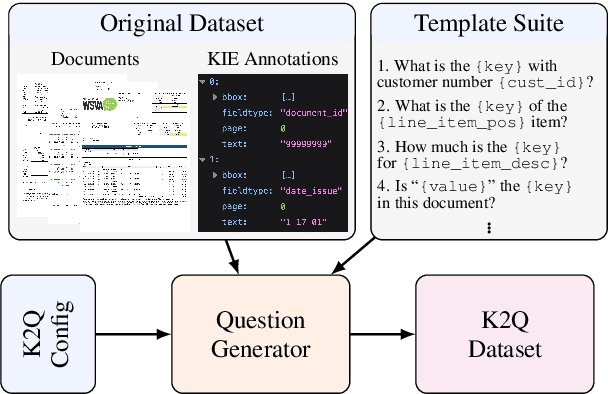
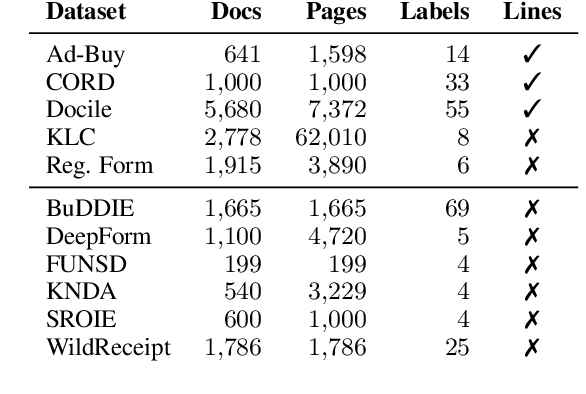
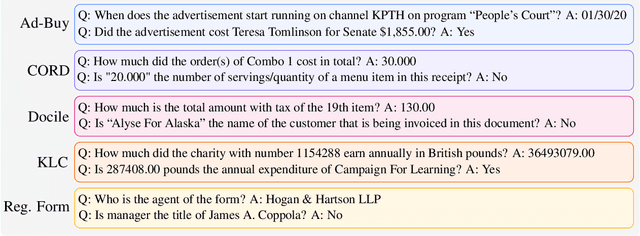

Abstract:The rise of large language models (LLMs) for visually rich document understanding (VRDU) has kindled a need for prompt-response, document-based datasets. As annotating new datasets from scratch is labor-intensive, the existing literature has generated prompt-response datasets from available resources using simple templates. For the case of key information extraction (KIE), one of the most common VRDU tasks, past work has typically employed the template "What is the value for the {key}?". However, given the variety of questions encountered in the wild, simple and uniform templates are insufficient for creating robust models in research and industrial contexts. In this work, we present K2Q, a diverse collection of five datasets converted from KIE to a prompt-response format using a plethora of bespoke templates. The questions in K2Q can span multiple entities and be extractive or boolean. We empirically compare the performance of seven baseline generative models on K2Q with zero-shot prompting. We further compare three of these models when training on K2Q versus training on simpler templates to motivate the need of our work. We find that creating diverse and intricate KIE questions enhances the performance and robustness of VRDU models. We hope this work encourages future studies on data quality for generative model training.
Fine-Tuning Language Models with Differential Privacy through Adaptive Noise Allocation
Oct 03, 2024
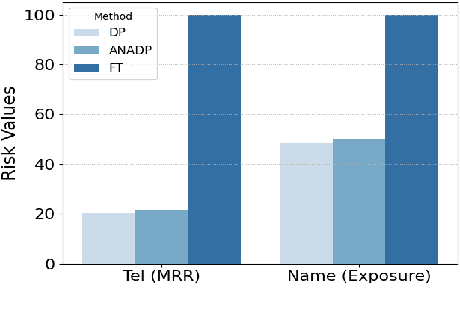
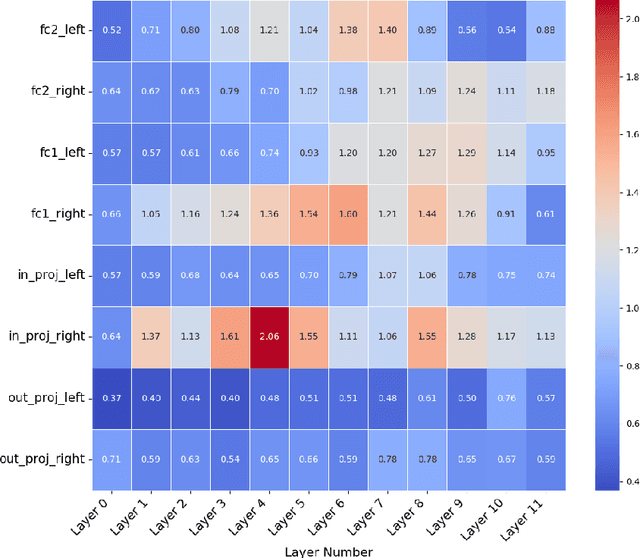

Abstract:Language models are capable of memorizing detailed patterns and information, leading to a double-edged effect: they achieve impressive modeling performance on downstream tasks with the stored knowledge but also raise significant privacy concerns. Traditional differential privacy based training approaches offer robust safeguards by employing a uniform noise distribution across all parameters. However, this overlooks the distinct sensitivities and contributions of individual parameters in privacy protection and often results in suboptimal models. To address these limitations, we propose ANADP, a novel algorithm that adaptively allocates additive noise based on the importance of model parameters. We demonstrate that ANADP narrows the performance gap between regular fine-tuning and traditional DP fine-tuning on a series of datasets while maintaining the required privacy constraints.
CodeMirage: Hallucinations in Code Generated by Large Language Models
Aug 14, 2024Abstract:Large Language Models (LLMs) have shown promising potentials in program generation and no-code automation. However, LLMs are prone to generate hallucinations, i.e., they generate text which sounds plausible but is incorrect. Although there has been a recent surge in research on LLM hallucinations for text generation, similar hallucination phenomenon can happen in code generation. Sometimes the generated code can have syntactical or logical errors as well as more advanced issues like security vulnerabilities, memory leaks, etc. Given the wide adaptation of LLMs to enhance efficiency in code generation and development in general, it becomes imperative to investigate hallucinations in code generation. To the best of our knowledge, this is the first attempt at studying hallucinations in the code generated by LLMs. We start by introducing the code hallucination definition and a comprehensive taxonomy of code hallucination types. We propose the first benchmark CodeMirage dataset for code hallucinations. The benchmark contains 1,137 GPT-3.5 generated hallucinated code snippets for Python programming problems from two base datasets - HumanEval and MBPP. We then propose the methodology for code hallucination detection and experiment with open source LLMs such as CodeLLaMA as well as OpenAI's GPT-3.5 and GPT-4 models using one-shot prompt. We find that GPT-4 performs the best on HumanEval dataset and gives comparable results to the fine-tuned CodeBERT baseline on MBPP dataset. Towards the end, we discuss various mitigation strategies for code hallucinations and conclude our work.
BuDDIE: A Business Document Dataset for Multi-task Information Extraction
Apr 05, 2024Abstract:The field of visually rich document understanding (VRDU) aims to solve a multitude of well-researched NLP tasks in a multi-modal domain. Several datasets exist for research on specific tasks of VRDU such as document classification (DC), key entity extraction (KEE), entity linking, visual question answering (VQA), inter alia. These datasets cover documents like invoices and receipts with sparse annotations such that they support one or two co-related tasks (e.g., entity extraction and entity linking). Unfortunately, only focusing on a single specific of documents or task is not representative of how documents often need to be processed in the wild - where variety in style and requirements is expected. In this paper, we introduce BuDDIE (Business Document Dataset for Information Extraction), the first multi-task dataset of 1,665 real-world business documents that contains rich and dense annotations for DC, KEE, and VQA. Our dataset consists of publicly available business entity documents from US state government websites. The documents are structured and vary in their style and layout across states and types (e.g., forms, certificates, reports, etc.). We provide data variety and quality metrics for BuDDIE as well as a series of baselines for each task. Our baselines cover traditional textual, multi-modal, and large language model approaches to VRDU.
Search-based Optimisation of LLM Learning Shots for Story Point Estimation
Mar 13, 2024Abstract:One of the ways Large Language Models (LLMs) are used to perform machine learning tasks is to provide them with a few examples before asking them to produce a prediction. This is a meta-learning process known as few-shot learning. In this paper, we use available Search-Based methods to optimise the number and combination of examples that can improve an LLM's estimation performance, when it is used to estimate story points for new agile tasks. Our preliminary results show that our SBSE technique improves the estimation performance of the LLM by 59.34% on average (in terms of mean absolute error of the estimation) over three datasets against a zero-shot setting.
* 6 pages, Accepted at SSBSE'23 NIER Track
Translating between SQL Dialects for Cloud Migration
Mar 13, 2024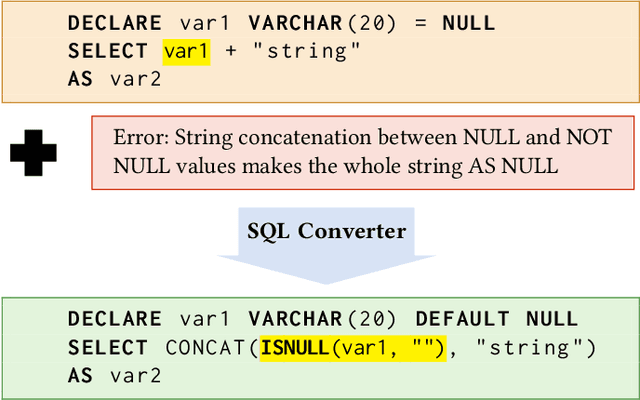
Abstract:Migrations of systems from on-site premises to the cloud has been a fundamental endeavor by many industrial institutions. A crucial component of such cloud migrations is the transition of databases to be hosted online. In this work, we consider the difficulties of this migration for SQL databases. While SQL is one of the prominent methods for storing database procedures, there are a plethora of different SQL dialects (e.g., MySQL, Postgres, etc.) which can complicate migrations when the on-premise SQL dialect differs to the dialect hosted on the cloud. Tools exist by common cloud provides such as AWS and Azure to aid in translating between dialects in order to mitigate the majority of the difficulties. However, these tools do not successfully translate $100\%$ of the code. Consequently, software engineers must manually convert the remainder of the untranslated database. For large organizations, this task quickly becomes intractable and so more innovative solutions are required. We consider this challenge a novel yet vital industrial research problem for any large corporation that is considering cloud migrations. Furthermore, we introduce potential avenues of research to tackle this challenge that have yielded promising preliminary results.
DocLLM: A layout-aware generative language model for multimodal document understanding
Dec 31, 2023

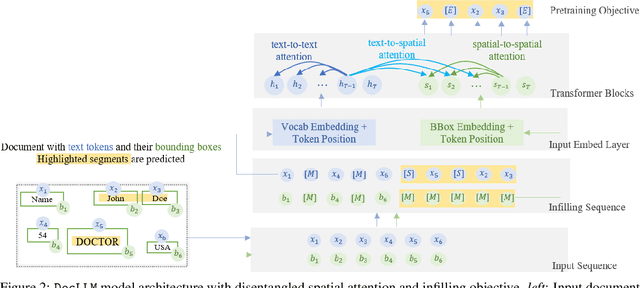

Abstract:Enterprise documents such as forms, invoices, receipts, reports, contracts, and other similar records, often carry rich semantics at the intersection of textual and spatial modalities. The visual cues offered by their complex layouts play a crucial role in comprehending these documents effectively. In this paper, we present DocLLM, a lightweight extension to traditional large language models (LLMs) for reasoning over visual documents, taking into account both textual semantics and spatial layout. Our model differs from existing multimodal LLMs by avoiding expensive image encoders and focuses exclusively on bounding box information to incorporate the spatial layout structure. Specifically, the cross-alignment between text and spatial modalities is captured by decomposing the attention mechanism in classical transformers to a set of disentangled matrices. Furthermore, we devise a pre-training objective that learns to infill text segments. This approach allows us to address irregular layouts and heterogeneous content frequently encountered in visual documents. The pre-trained model is fine-tuned using a large-scale instruction dataset, covering four core document intelligence tasks. We demonstrate that our solution outperforms SotA LLMs on 14 out of 16 datasets across all tasks, and generalizes well to 4 out of 5 previously unseen datasets.
Can GPT models be Financial Analysts? An Evaluation of ChatGPT and GPT-4 on mock CFA Exams
Oct 12, 2023



Abstract:Large Language Models (LLMs) have demonstrated remarkable performance on a wide range of Natural Language Processing (NLP) tasks, often matching or even beating state-of-the-art task-specific models. This study aims at assessing the financial reasoning capabilities of LLMs. We leverage mock exam questions of the Chartered Financial Analyst (CFA) Program to conduct a comprehensive evaluation of ChatGPT and GPT-4 in financial analysis, considering Zero-Shot (ZS), Chain-of-Thought (CoT), and Few-Shot (FS) scenarios. We present an in-depth analysis of the models' performance and limitations, and estimate whether they would have a chance at passing the CFA exams. Finally, we outline insights into potential strategies and improvements to enhance the applicability of LLMs in finance. In this perspective, we hope this work paves the way for future studies to continue enhancing LLMs for financial reasoning through rigorous evaluation.
Unsupervised Domain Adaptation using Lexical Transformations and Label Injection for Twitter Data
Jul 14, 2023Abstract:Domain adaptation is an important and widely studied problem in natural language processing. A large body of literature tries to solve this problem by adapting models trained on the source domain to the target domain. In this paper, we instead solve this problem from a dataset perspective. We modify the source domain dataset with simple lexical transformations to reduce the domain shift between the source dataset distribution and the target dataset distribution. We find that models trained on the transformed source domain dataset performs significantly better than zero-shot models. Using our proposed transformations to convert standard English to tweets, we reach an unsupervised part-of-speech (POS) tagging accuracy of 92.14% (from 81.54% zero shot accuracy), which is only slightly below the supervised performance of 94.45%. We also use our proposed transformations to synthetically generate tweets and augment the Twitter dataset to achieve state-of-the-art performance for POS tagging.
 Add to Chrome
Add to Chrome Add to Firefox
Add to Firefox Add to Edge
Add to Edge